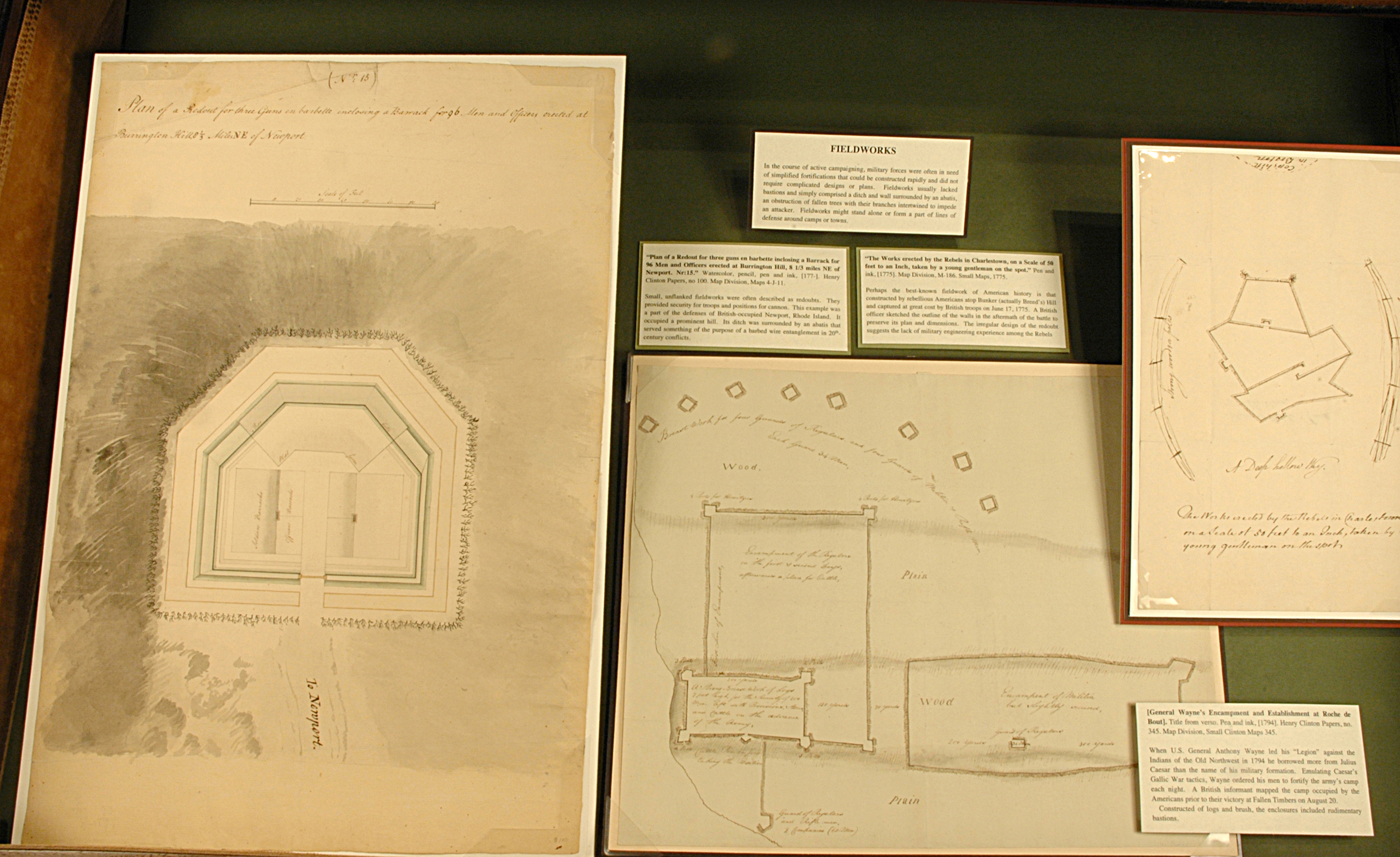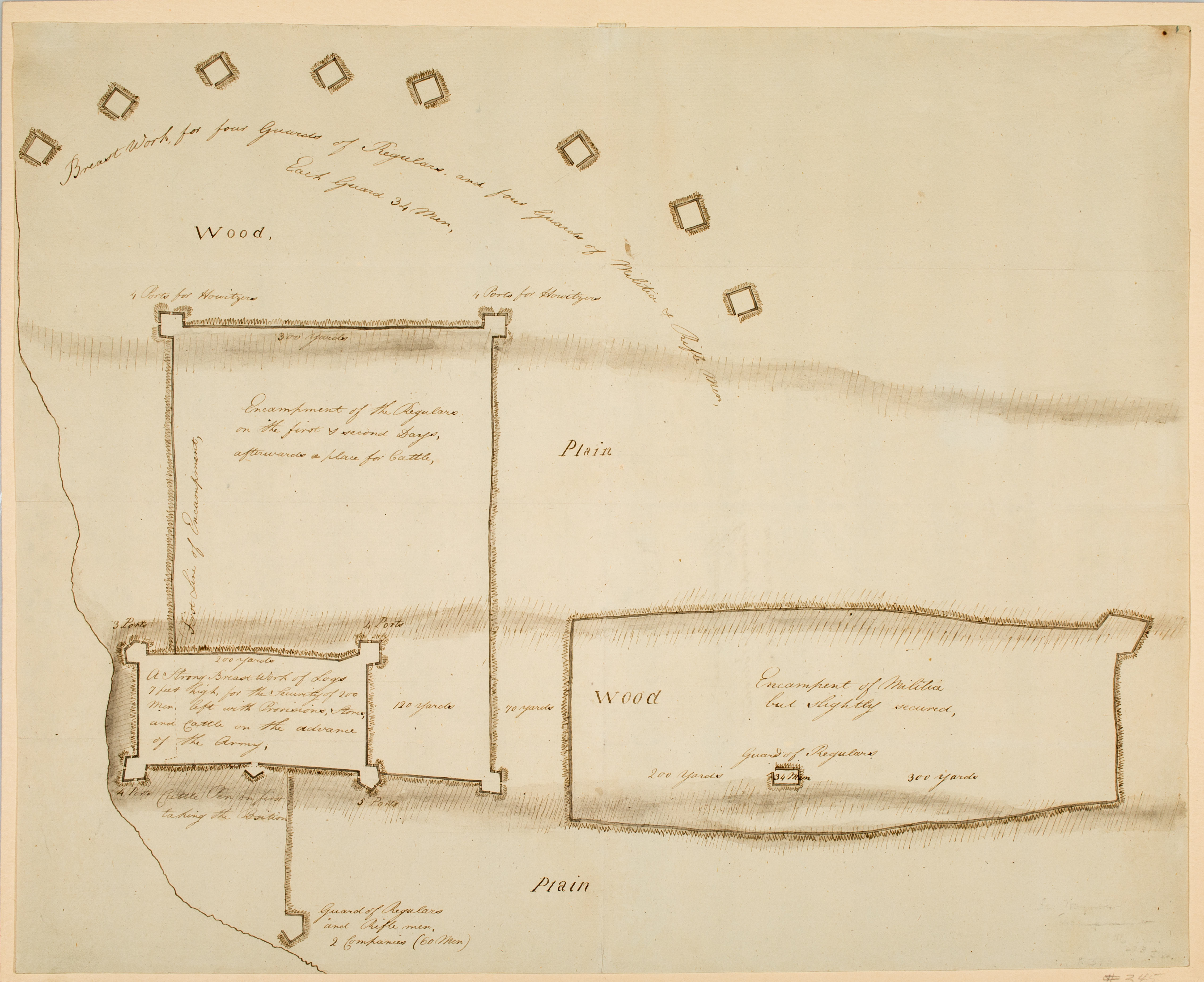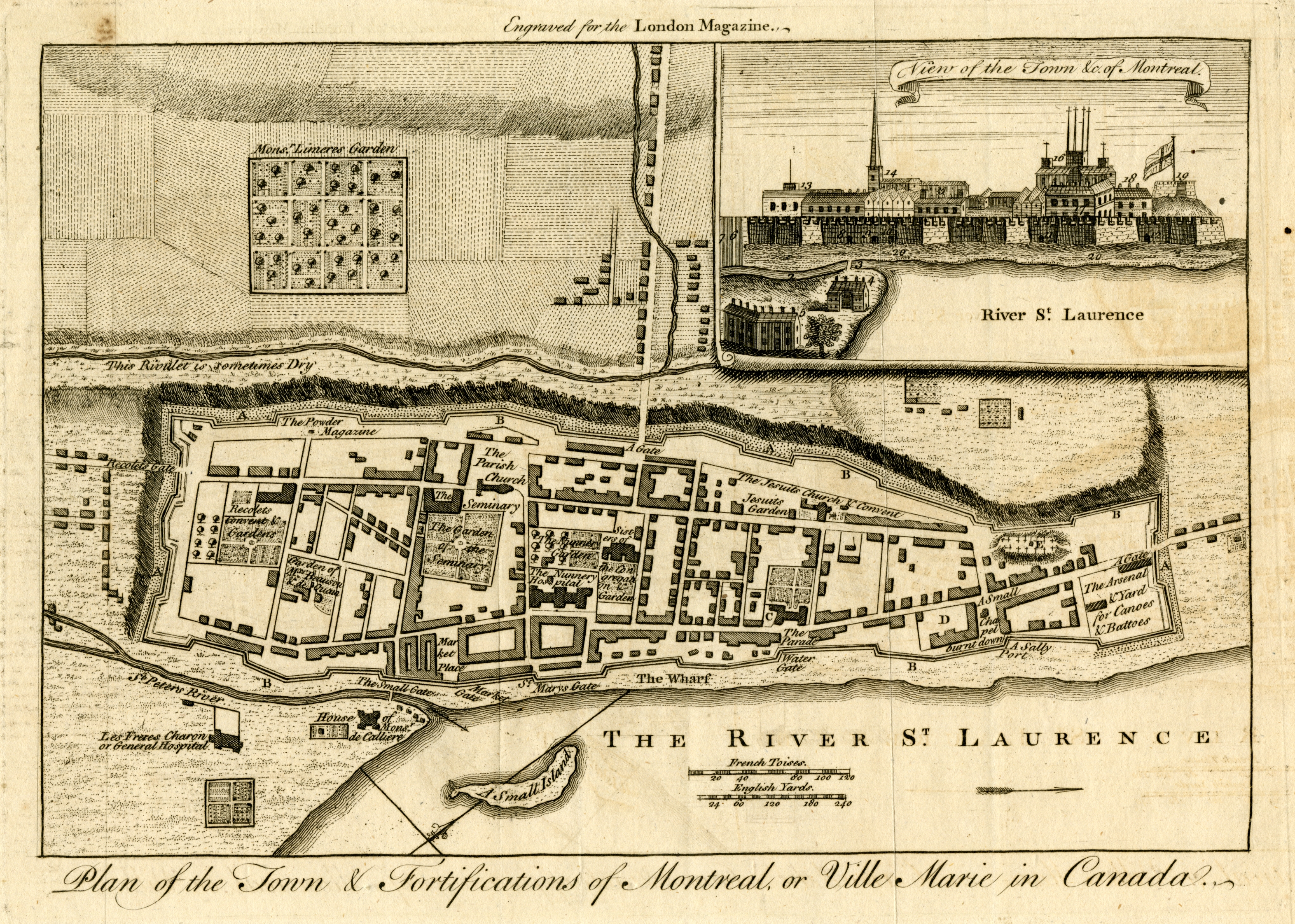Case 13
Case 13: Fieldworks
In the course of active campaigning, military forces were often in need of simplified fortifications that could be constructed rapidly and did not require complicated designs or plans. Fieldworks usually lacked bastions and simply comprised a ditch and wall surrounded by an abatis, an obstruction of fallen trees with their branches intertwined to impede an attacker. Fieldworks might stand alone or form a part of lines of defense around camps or towns.
[General Wayne’s Encampment and Establishment at Roche de Bout]. Title from verso. Pen and ink, [1794]. Henry Clinton Papers, no. 345. Map Division, Small Clinton Maps 345.
When U.S. General Anthony Wayne led his “Legion” against the Indians of the Old Northwest in 1794 he borrowed more from Julius Caesar than the name of his military formation. Emulating Caesar’s Gallic War tactics, Wayne ordered his men to fortify the army’s camp each night. A British informant mapped the camp occupied by the Americans prior to their victory at Fallen Timbers on August 20.
Constructed of logs and brush, the enclosures included rudimentary bastions.
“Plan of a Redout for three guns en barbette inclosing a Barrack for 96 Men and Officers erected at Burrington Hill, 8 1/3 miles NE of Newport. Nr:15.” Watercolor, pencil, pen and ink, [177-]. Henry Clinton Papers, no 100. Map Division, Maps 4-J-11.
Small, unflanked fieldworks were often described as redoubts. They provided security for troops and positions for cannon. This example was a part of the defenses of British-occupied Newport, Rhode Island. It occupied a prominent hill. Its ditch was surrounded by an abatis that served something of the purpose of a barbed wire entanglement in 20th-century conflicts.
“The Works erected by the Rebels in Charlestown, on a Scale of 50 feet to an Inch, taken by a young gentleman on the spot.” Pen and ink, [1775]. Map Division, M-186. Small Maps, 1775.
Perhaps the best-known fieldwork of American history is that constructed by rebellious Americans atop Bunker (actually Breed’s) Hill and captured at great cost by British troops on June 17, 1775. A British officer sketched the outline of the walls in the aftermath of the battle to preserve its plan and dimensions. The irregular design of the redoubt suggests the lack of military engineering experience among the Rebels.






